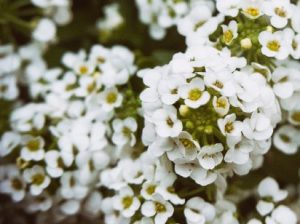By Norma Kisida, Master Gardener 2012
Whether a full-time or a seasonal resident, we want the most from our landscape. Here in sunny Florida we are fortunate to be able to have colorful plants all year, if we choose carefully and plant wisely. Manatee County winter weather is varied both in terms of if and where a freeze occurs. A killing frost is not always widespread; but chances are high for one (or more) in January and February. Therefore, it is wise to plant annuals that tolerate brief episodes of freezing temperatures and thrive in the sun and cool weather. Winter is also our dry season; so, it is important to plant things that are not dependent on frequent rainfall. Keep in mind that plants may still be offered in garden centers that will not be successful this time of year.
Cold Tolerant Annuals
Many cold tolerant annuals are available in a wide range of colors. Pansies, snapdragons, and violas are cold hardy, perform best if planted in the fall, and bloom until warm weather in the spring. Other annuals include sweet alyssum, dianthus, petunias, geraniums, begonias, gerber daisies, and Osteospermum (bush daisy). Impatiens is another popular choice; but, requires frequent watering and recently fell prey to downy mildew disease. Ornamental cabbage or kale also adds splashes of color and texture.
Tips for Color
Plants in containers or hanging baskets add a big pop of color and can be moved or covered during infrequent but damaging cold snaps. Bright blue ceramic pots are a great way to add color to your garden because blue is a very complimentary color.
Many shrubs have colorful berries, leaves or foliage during cooler months. “Fashion” azalea (Rhododendron x ‘fashion’) does well here and blooms in the winter. Native shrubs such as American beautyberry (Callicarpa americana) and firebush (Hamelia patens) have winter berries. If damaged by the cold; they can be pruned in the spring to regrow and flower quickly. Thyrallis or shower-of-gold (Galphimia glauca) and firecracker (Russelia equisetiformis has year-round bright flowers. It can also be pruned back in the spring.
Foliage plants offer contrasting color, shape and texture to the winter garden. Some examples are wormwood, croton, flax lily, Texas sage, Persian shield, and Devil’s backbone.
Ensure Success
Before purchasing plants decide on the best planting location, which is full sun for most winter annuals. Planting groups of the same plant for splashes of color is more effective than a scattering of the same plant. Work organic matter into the soil and add a controlled-release fertilizer once plants are established. Water plants well before and after planting and frequently until the roots are established. Then water according to the plant’s requirements. Hand watering or micro irrigation at ground level is preferable to overhead watering. Wet leaves encourage disease. You should deadhead plants often to encourage new blooms and monitor plants frequently for pests and disease.
Additional Resources
- Gardening with Annuals in Florida http://edis.ifas.ufl.edu/mg319
- Adding Winter Color https://sfyl.ifas.ufl.edu/media/sfylifasufledu/orange/hort-res/docs/pdf/001-Adding-Winter-Color-to-Central-Florida-Yards.pdf
- Chase Away Those Winter Blahs https://www.jacksonville.com/community/nassau/2010-12-18/story/masterful-gardening-chase-away-those-winter-garden-blahs-some
- Winter Annuals http://gardeningsolutions.ifas.ufl.edu/plants/ornamentals/winter-annuals.html
 0
0
